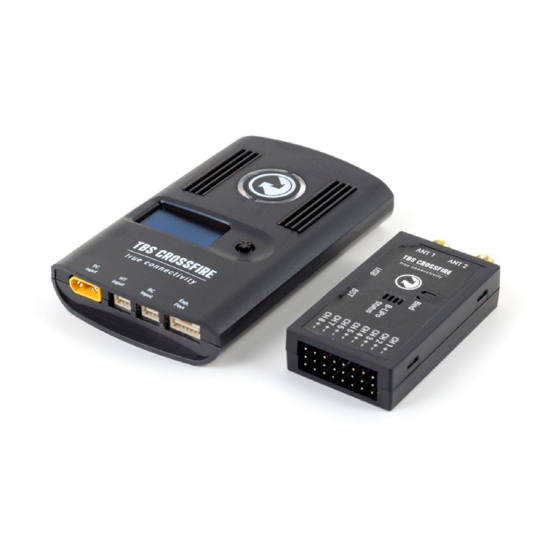
Table of Contents
Advertisement
TBS CROSSFIRE R/C System
Adaptive Long Range Remote Control System
The TBS CROSSFIRE (XF) system is a R/C link system made for FPV enthusiasts. It features unheard of range
without sacrificing basic functionality such as being immune to interference from onboard equipment, low
latency control or two-way communications including telemetry functionality.
Key features
•
Long range, adaptive and robust remote control system for your aircraft
•
Immune to on-board noise
•
Two-way communication link with real-time link vitals and telemetry
•
Self-healing frequency hopping link
•
Receiver beacon mode to recover your downed aircraft
•
Super easy binding and configuration via built-in OLED display, OpenTX LUA or TBS TANGO remote
•
Low latency control for perfect immersive feeling
•
Free output mappable 8 output diversity with integrated backup battery or super tiny receiver ( 4g
weight only ) both with up to 12 channel PPM
•
Ability to fly with multiple friends at the same time (10 or more)
•
Dynamic self-selecting or selectable RF power from 10mW to 2W (local restrictions apply)
•
Dedicated head-tracking input option for full FPV immersion
•
Transmitter LED shows link health, OLED display for built in configuration
•
Expansion port for future feature support
1
Revision 2019-03-24
Advertisement
Table of Contents



Need help?
Do you have a question about the Micro TX and is the answer not in the manual?
Questions and answers